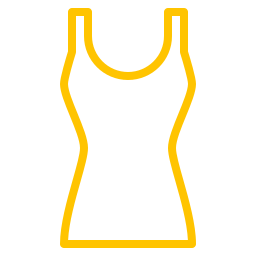A – Attachment or Latching is Not Established
Attachment or latching is one of the most common challenges facing new moms. Even though it is perfectly natural and instinctual for a baby to breastfeed without an instruction manual, sometimes you both need a little help in getting the baby attached to the breast. However, with support, technique and time, it should gradually become easier. Only when your baby is attaching or “latching” well will breastfeeding be smooth and easy. It may be as easy as finding the right position, and some breastfeeding positions are better for securing a good latch.
In fact, our article explains that the cross-cradle position is a good one for babies just starting to learn how to latch properly. The secret of a good attachment is that the baby should not be only sucking on the end of the nipple. Good signs to look for include noticing that the baby’s mouth covers, at least, a few centimeters of the underneath part of the areola (the brown skin around the nipple) as well as a little of the top. This is called an asymmetric latch because the baby’s tongue needs to be as far onto the breast as possible.
Feeding your baby shouldn’t hurt, but if they are not attaching properly to the breast, it can be uncomfortable. If you’re in pain, it’s a sign that your baby isn’t latched on properly. Don’t forget however that you can use nipple shields on a temporary basis if your nipples are a little tender while you and your baby are perfecting the art of attachment. Nipple shields can help with sore nipples but also help the baby to develop better latch-on behavior. If you are still having problems, talk to your lactation consultant.
B – Breast Milk Supply is Low
Many breastfeeding moms say that one of the most common challenges is the feeling that they are not producing enough breast milk. The truth is that breasts respond to how much milk your baby needs. For the most part, your breasts will make “enough” milk. It is important to remember that breastfeeding is an issue of demand and supply, not supply and demand. However, since many new moms feel that they are not producing enough milk, they become stressed and worried, which of course adds to the situation. In fact, in reality, most moms worry that their milk supply is low, even when it isn’t.
Even if breasts don’t “feel full enough”, the best way to determine if your baby is getting enough to eat is to look at whether they are gaining weight and seem healthy. You can also assume all is well if the baby is producing enough wet nappies (with colorless urine) and having normal bowel movements. It is important to keep in mind that it is perfectly normal for a new mother’s breasts to sometimes feel less full, or even “empty”. You can’t “see” the amount of breast milk being consumed, and how your breasts “feel” is very subjective.
If you are still concerned about whether you are producing enough breast milk, here are some steps to take.
- Remember breastfeeding follows the law of demand and supply, not the other way.
- Check baby’s latch to make sure they are getting enough milk to stimulate further production.
- Breastfeed on demand and follow the lead of the baby who knows when they want to feed.
- Don’t use formula as it may make the baby feel full and reduce the time they want to breastfeed
- Try double pumping between feeds to stimulate breasts to produce more milk.
- Try to relax, take care and try to trust in yourself!
C – Cracked and Sore Nipples
It is not unusual for you to experience a little tenderness or even soreness during your breastfeeding journey. However, despite taking extra care and following all guidance, nipples can crack and get sore. Sore and cracked nipples can be the result of dry skin or pulling, but most likely because of a latching or attachment problem. To reduce the possibility of sore nipples, getting the breastfeeding latch is the most important thing. A baby should not just have the nipple in their mouth, but the bottom part of the areola underneath as well.
If you do get cracked or sore nipples, there are some things you can do. First, it is important not to clean the nipples with lotions, soap or alcohol but to just use a little breast milk or water. Letting breasts dry in the open air or using a little lanolin cream can also be helpful. We’ve already mentioned nipple shields that fit over the nipple and can help reduce pain. They make it possible to keep breastfeeding while the nipples heal. Sore nipples are manageable, so be sure to get help from a lactation consultant or a breastfeeding professional in case they are not healing properly. There is always a reason behind the problem, and those reasons are addressable. These three common breastfeeding challenges all have solutions.





















